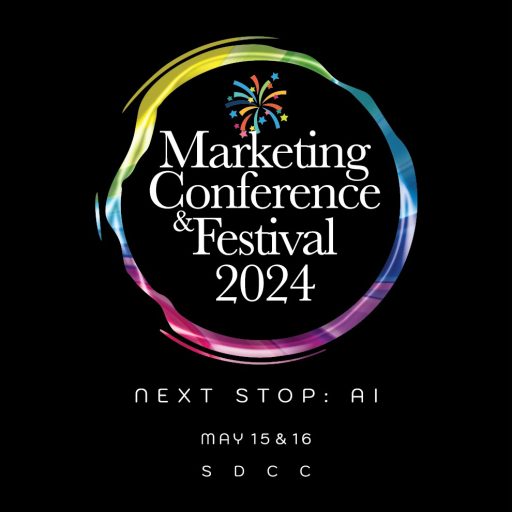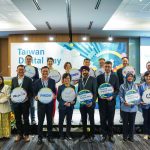NSTP: Article of Faith
In MARKETING’s end February issue, we interview the Chief Commercial Officer(CCO) of New Straits Times Press, Alfian Talib. With barely five months into his new role, Alfian is in the throes of a constant challenge: to fade out the negative din against the print and embrace digital as the new face of the legacy he has inherited.
 Do you see a further decline of print? Will 2018 be a watershed for this industry?
Do you see a further decline of print? Will 2018 be a watershed for this industry?
New York Times CEO, Mark Thompson, recently said in an interview that print will be around for another decade. Malaysia too has a significant population that verifies news from a newspaper. I don’t see that going away.
And still print is shrinking. How big will be the drop here?
My bet on the print business is, starting 2018, it will hit a plateau. We already saw this happening with NST, since the past 6 months. So, there is a hard-core segment that consumes news on print. In comparison, our digital has been growing significantly year on year, for 2017.
What is that one opportunity you still see in the newspaper industry?
Enriching Malaysian lives with genuine local and global news, phenomenal arts and intriguing education materials are what NSTP is all about. Although the print media sales around the globe have slumped, SE Asia is still vital. As digital disruption is a bit slow in the region, it gives us a chance to learn to adapt to the industrial revolution 4.0. Transitioning into the digital platform while enhancing the traditional print platform is the step that we are taking as it is the only way forward in the media industry.
What is the circulation of NSTP now?
Circulation for NSTP (all three publications) is around 700K daily. And it is consistent at that level. No huge spikes; no significant lows.
What has been the most important change NST has brought in?
We are adopting technology into the legacy of the original print business itself; digital elements into the operations of the print business. For example, through the past one year we have revamped the distribution system of our newspapers. And it has taken off tremendously well. Distribution of newsprint has been over reliant on the traditional way of distribution; along this route, it was difficult for most publishers to have visibility over sales unless a big retail, like a 7-Eleven was involved. One would never have a correct figure for a roadside store.
By recruiting a whole new team from the FMCG background, we have completely restructured the whole ecosystem. They now lead the whole logistics ecosystem, specially focusing on the distribution of newspapers. This allows us to take advantage of the digital technology embedded into this ecosystem. Now we can exactly know at every single point of sale what kind of numbers we are doing. It is no longer a number we pluck from the sky. I believe it is no mean feat to change something that went on for over 100 years! And if you do not have the stomach to follow through; it becomes a real challenge.
So how is this knowledge helping you now?
The good thing is we can now identify the white spaces; we know we have a weaker coverage in any particular area. Earlier, we relied only on the distributor and engaged with about 2000 distributors without any kind of dedicated coverage. We have revamped the structure now to engage with only 32 main distributors, more focus; ensuring right penetration. They are our Market Execution Partners, who protect and enhance the traditional physical newspaper in staying relevant in the internet era.
What is the key challenge to being a Digital First publisher?
We report news but we are also a business. We cannot exist as a business if it is loss- making. To strike a balance between how to survive in the new ecosystem, which is the new normal now, and to continue providing quality content is the biggest challenge.
We are fortunate to be in the digital age. From 1.3 million copies per week in the glorious days of the print with almost 8 millions readership, we are now today reaching far bigger audiences; by virtue of digital, we reach far more Malaysians; we are accessed by 10 million unique visitors on a monthly basis.
You mentioned the innovations in internal processes to become a truly digital publisher. Can you shed some light on those changes?
We now have an integrated newsroom. So, though we run independent titles, we have put in place processes to best optimize our resources. This helps us cover news for all our titles.Our reporters bring back news to the central ecosystem; then the respective editors pick them up; so it is no more writing one to one; it is like writing many to one. By doing this, we cover not just more news but more hyper local news by spreading out our reporters, giving a huge multiplier effect. This is crucial because digital is limitless.
Another innovation we have carried out is the news dissipation cycle, whereby, our reporters send out a breaking kind of news in the first 15 minutes of the event he or she have gone out to cover. Then we have invested hugely in ensuring a loading time of 3 seconds for our digital news. This gives us a huge advantage over other news portals.
What in your view would be the right way to monetise content in print as well as in various digital media platforms, such as social media, apps and online video?
In my view, the right way to monetize content in print as well as in digital platforms is by providing engaging, exclusive content and make it more approachable to the consumer. NSTP has always been providing exclusive real-time news updates through its digital platforms first, which includes the social media and online news portal, not to forget the subscription base apps in the Google Play Store and Apple App Store.
Detailed news reports are published in NSTP publications, which includes New Straits Times, Berita Harian and Harian Metro, the following day. Further, producing alternative ways to encode and decode news for the consumer, which includes interactive videos of news reporting and news applications, makes it easier for NSTP to sustain consumer’s loyalty towards its content, products and services.
Trends in media industry that you see emerging in 2018?
Data Analysis in the development of news holds a potential to be a significant trend in 2018. In our organization we have a dedicated team of observers, who use listening tools to spot what news will garner more readership and attention. Journalists use this tools with great ease. A dashboard is created using the digital listening tools and then we identify the numbers of engagements from the consumer; consequently identifying the trending news which can be monetized by the news outlet.
By analyzing data, we can also monetize on the consumer’s preferences by making the content more specific and targeted. Listening to the needs of our audience is one of the most important elements in the digitalisation of news.
Your goal for NSTP you are keenly watching out for?
By 2020, as an organization, we aspire to be able to shift our reliance on revenue not only on advertising but on non-advertising revenue, like subscription. Though we are moving towards digital, we are over reliant on our legacy revenue. We hope to see a major shift. We have seen a good growth in digital and in the next 18-24 months, I would be personally happy to reach a good mix of 60-40 (with 40 percent revenue coming from the digital model).
To read the full story, click here!

30 SENIOR MARKETERS.
50 MARKETING CASE STUDIES.
2 DAYS LIKE AN MBA IN MARKETING!
APPIES Malaysia is an annual 2-day Marketing Congress and Awards Festival showcasing, sharing and celebrating the country’s best marketing campaigns. Shortlisted entries will be judged by 30 leaders in the Marketing industry who will put the presenter’s knowledge to the test in a unique Live Presentation environment.
Date: 16 & 17 April, 2018
Venue: Grand Ballroom, Eastin Hotel, Petaling Jaya.
Time: 8.30am – 6.00pm
To register, connect with Ruby on 0377262588, [email protected], or http://www.appies.com.my/files/Appies17_Conference-RegFORM.pdf
MARKETING Magazine is not responsible for the content of external sites.
The Malaysian Marketing Conference & Festival 2024 at the Sime Darby Convention Centre is a TWO-day marketing event for all those in Marketing, Media, Advertising, PR, Digital, Data, and more….
The experience is on May 15 & 16, with Keynote Speakers, multiple tracks or Breakaway Sessions hosted by our booth partners who will show you the latest in the industry.










